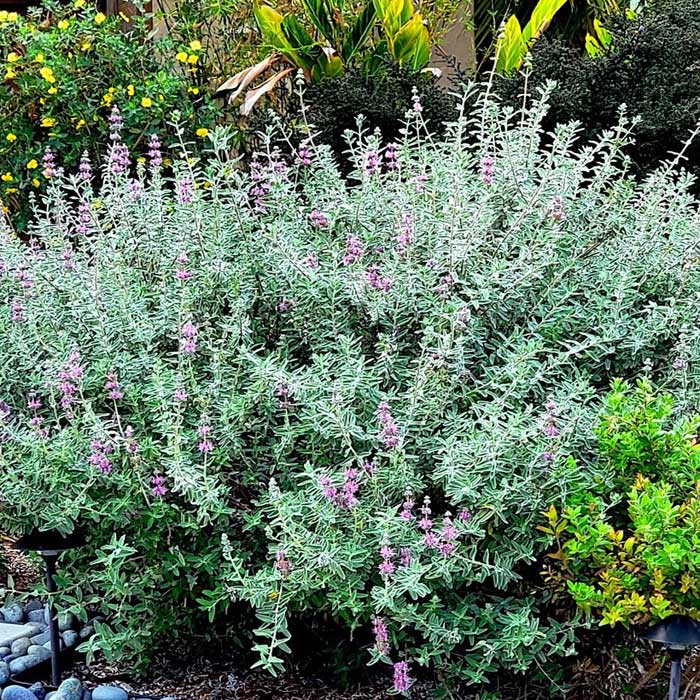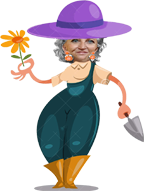Desert Purple Sage

Botanical Name: Salvia dorrii
Category: Perennial
Divisible: Yes
Common Name: Desert Purple Sage
Evergreen: Yes
Propagation: Division, seed, cutting
Family: Lamiaceae
Invasive: No
Size:12-36″ tall x 12-36″ wide
Some may call desert sage (Salvia dorrii) one of the American West’s most rugged but beautiful native shrubs. It is among the few flowering noncactus plants that relishes heat, nutrient-poor soil and little water. It is a late spring blooming native shrub with silver foliage and showy purple flower spikes pushing out from mid-purple bracts.
Desert purple sage is drought tolerant. The silvery leaves and flower heads are aromatic when the foliage is handled or crushed. It attracts pollinating bees and butterflies.
The flowers remain on the plants after being pollinated, with the desiccated flowers remaining for some weeks or months after flowering.
Desert Purple Sage needs sun – no less than eight hours each day. Once established, do not provide any supplemental water.
My Experience:
Desert Purple Sage is not well known outside of the circle of native plant enthusiasts. It is a fast growing, heavy bloomer best suited to the hottest, most challenging planting sites.
Like Russian sage it requires so little water that it is perfect for those unirrigated areas of your garden. In fact planting this in regularly watered beds could be detrimental to the plant.
Unlike Russian Sage it will stay green all winter and does not need to be cut back in order to bloom the next spring.
I cut off spent flowers after it has finished blooming in the late spring and early summer. I follow the brown stems back to the base of the plant and cut them out. If you are into potpourri saving the flower heads can bring their wonderful scent into your home.
Apparently Desert Purple Sage can be divided but it is a very woody plant that is huge before you know it. Not an easy job. I would recommend propagation by seed or cuttings.



Growing Desert Sage from Seed
Seeds should be pre-treated with 6 weeks of cold moist stratification for spring/winter sowing. Put seeds in moist sand and store in the refrigerator. This is not necessary if sown in the fall.
Direct Sowing:
- Direct sow seed in late fall or pre-treated seeds in early spring.
- Prepare planting area by removing weeds and turning soil.
- Plant several seeds for each plant 2-3’ apart and ¼” to ½” deep.
- Water lightly and keep soil moist until germination – about 2 weeks.
- If more seeds have germinated thin to the strongest seedling.
- Seedlings require more water than the established plant – water daily especially if hot and dry. Taper off water as they become established.
Indoor Start:
- Sow seeds in late fall in a well draining growing medium. Cover lightly with soil, then a thin layer of coarse grit – soil or sand. Water deeply and place containers outside. Germination occurs in 7-14 days.
- After seedlings are well established place containers in a greenhouse or cold frame. Keep moderately watered and fertilize weekly.
- At 8 to 12 weeks begin to harden off for outdoor planting.
- Gather seed heads in mid to late July. Allow to dry out then place in a paper bag and shake to release the seeds.
Propagating Desert Sage from Cuttings
Cut a 4-8″ section from the young growing tips. Strip leaves to expose 2 or more nodes and trim top. Place in moist sand or perlite after dipping the fresh cuttings into rooting hormone (optional because these plants typically root well on their own). The new plants are ready to transplant in a few weeks.
Buy Desert Purple Sage seeds from my Etsy shop
Buy Dried Desert Purple Sage from my Etsy shop

0 Comments